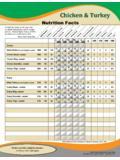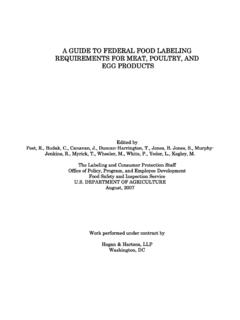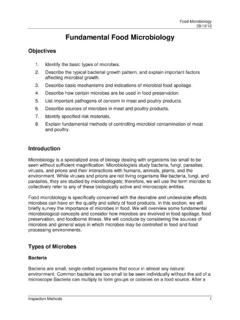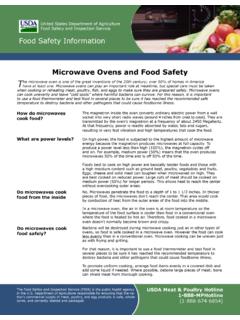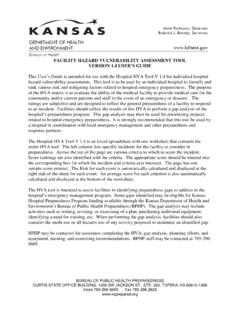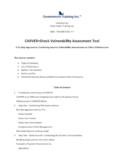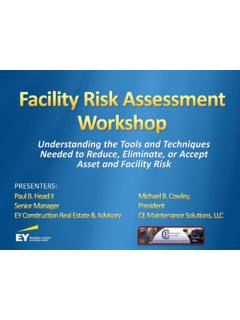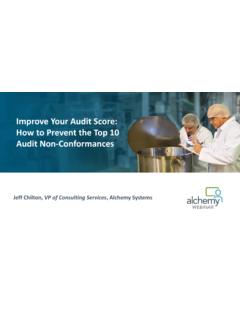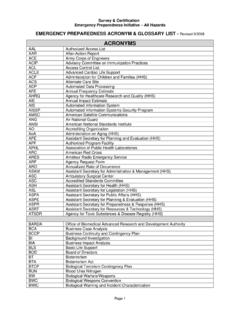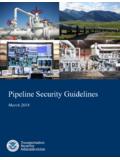Transcription of FSIS Safety and Security Guidelines
1 IiliiFSIS Safety and Security Guidelines for the Transportation and Distribution of Meat, Poultry, and Egg Products Un ted States Department of Agr cu ture Food Safety and Inspect on Serv ce The FSIS Food Safety and Security Guidelines for the Transportation and Distribution of Meat, Poultry, and Egg Products are designed to aid those handling food products during transportation and storage. These Guidelines provide a list of Safety and Security measures that can be taken to prevent contamination of meat, poultry, and egg products during loading and unloading, transportation, and in-transit storage. FSIS strongly encourages shippers, receivers and transporters of these products to develop controls for ensuring the condition of the products through all phases of distribution.
2 Such controls are necessary to protect the products from intentional, as well as unintentional, contamination. The first section of these Guidelines provides food Safety measures to help prevent the physical, chemical, radiological, or microbiological contamination of meat, poultry, and egg products during transportation and storage. The second section addresses Security measures specifically intended to prevent the same forms of contamination due to criminal or terrorist acts. Both sections apply to all points of shipment from the processor to delivery at the retail store, restaurant, or other facility serving consumers of the products.
3 FSIS recognizes that not all of the guidance contained in this document will be appropriate or practical for every transporter or distributor. Operators should review the Guidelines in each section that relates to a component of their operation, and assess which preventative measures are suitable. It is recommended that operators consider the goal of the preventative measure, assess whether the goal is relevant to their operation, and, if so, design an approach that is both efficient and effective to accomplish the goal under their conditions of operation. For questions or clarification on these Guidelines , contact the FSIS Technical Service Center at 1-800-233-3935.
4 Section I iFood Safety During Transportation and Distr bution of Meat, Poultry, and Egg Products Meat, poultry, and egg products are susceptible to contamination from a wide variety of physical, microbial, chemical, and radiological agents. These products are particularly vulnerable to microbiological hazards because their moisture, pH levels, and high protein content provide ideal environments for the growth of bacteria. Because of these characteristics, the products must be carefully monitored to prevent their exposure. Food Safety protection can be improved by the control of hazards through the use of preventive methods, including good sanitation, manufacturing practices, and the Hazard Analysis and Critical Control Point (HACCP) system throughout the food production and distribution chain.
5 Meat, poultry, and egg products must be refrigerated or frozen after processing and before shipment to inhibit spoilage and growth of pathogens. During transportation and storage, the challenge is to maintain proper refrigeration temperatures and to keep the cold-chain from breaking during steps such as palletization, staging, loading and unloading of containers, and in storage. 3 General Guidance In the United States, most food is transported by truck. However, meat, poultry, and egg products may be transferred to and from other modes of transportation during shipment and held at intermediate warehouses as well as at transfer or handling facilities, such as airports, break-bulk terminals, and rail sidings.
6 Because transportation and storage are vital links in the farm-to-table food chain, effective control measures are essential at each point in the food distribution chain to prevent unintentional contamination. The following general Guidelines address food Safety measures that should be taken by shippers from the point of food production through delivery. The Guidelines do not cover breeding, feedlot, or any other pre-slaughter live-animal operations or pre-shipment operations at egg-laying farms. 4 Transportation Safety Plan Identify vulnerable points and develop a comprehensive transportation sanitation and Safety plan.
7 Processors and distributors shipping products should assess and implement measures that will ensure the sanitation and Safety of products from initial shipment through delivery to other destinations. A flow diagram from the point-of-origin to final destination, including all shipping modes/routes, can be a helpful assessment tool. (See sample flow diagram.) Identify all points of vulnerability where there is potential for adulteration or contamination to occur: Identify potential hazards. If control points are identified, then determine the method, frequency, and limit that must be met. Identify if control is possible at the point(s) of hazard and what is the most effective point to exert control.
8 This will determine where and how often monitoring and verification of the limits set should occur and what, if any, corrective and preventive actions should be taken. Define what controls should be put in place to prevent product adulteration or contamination during the transportation and storage process. Plant Origination Port Boat Destination Port Consumer Truck Truck Warehouse Truck Restaurant/ Sample Flow Diagram for Food Product Transportation Points in Commerce 5 As an additional check on product condition during and after transportation and storage, processors may want to include special arrangements with receivers to sample and conduct microbiological or other tests on products.
9 The results could be compared with pre-shipment results to determine whether adjustments are needed in transport methods or procedures. Verify that contracted transporters ( air, ground, maritime, rail) and storage/warehouse facilities have a food Safety program in effect. Consider including specific Security measures in contracts and verify that measures are being met. Include procedures for the immediate recall of adulterated products from trade and consumer channels (this applies to processors, transporters, and wholesale and retail distributors). Have a system in place to track your products, including salvage, reworked, and returned products.
10 Train personnel Train managers and supervisors involved in the transportation, handling, and storage of food products in food hygiene and sanitation. They should be able to judge potential risks, take appropriate preventive and corrective actions, and ensure effective monitoring and supervision to prevent intentional and unintentional contamination from occurring. Train personnel involved in all phases of transport, handling and storage in personal hygiene, vehicle inspection procedures, and transportation procedures that will ensure the Safety of meat, poultry, and egg products. 6 Storage Food Safety System Design and maintain a storage and warehousing food Safety system.
